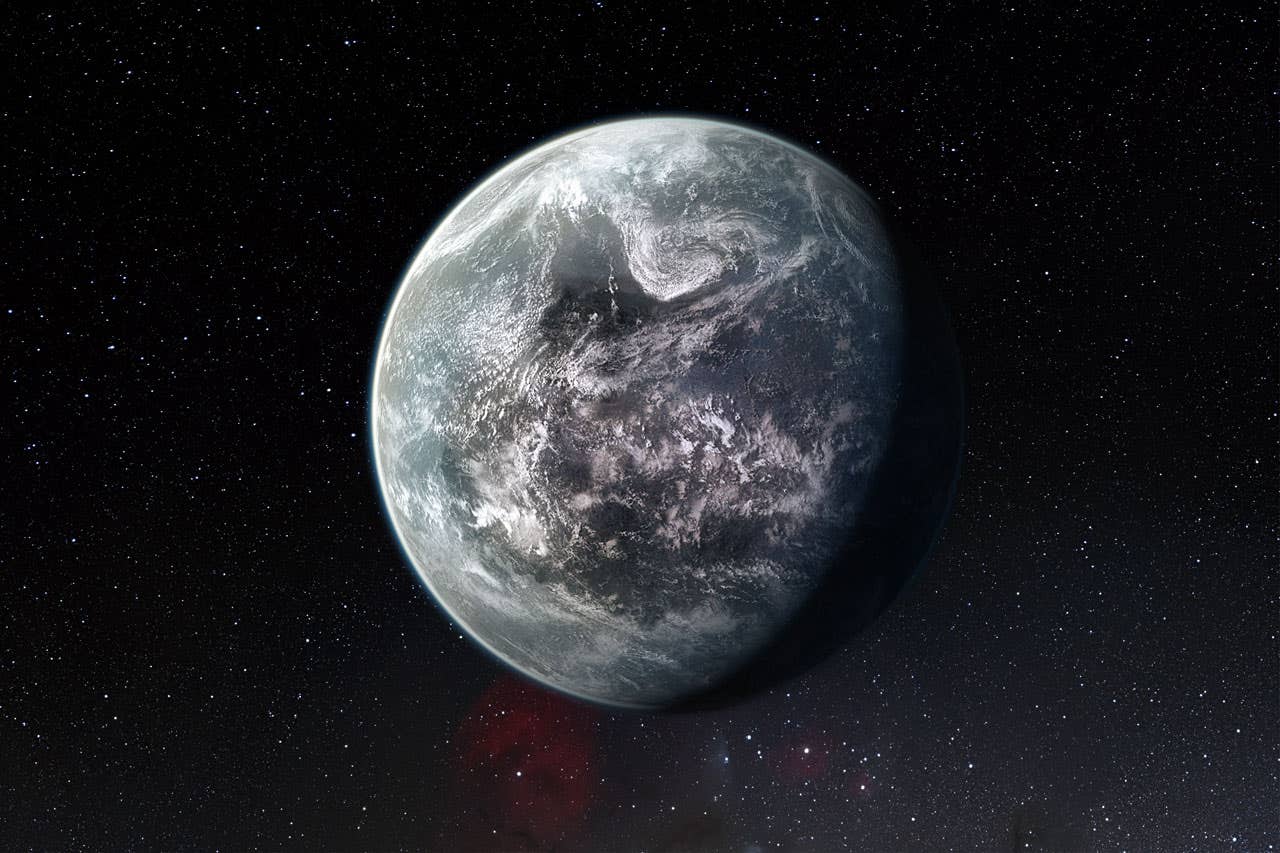Planets contain more water than previously thought, research finds
Most exoplanets are extremely hot and feature oceans of molten magma, which haven’t yet cooled to form a solid silicate mantle like Earth’s.

Artist’s impression of a Super-Earth orbiting a Sun-like star. (CREDIT: ESO)
Scientists have long used a simple model to understand exoplanets—planets orbiting stars outside our solar system—based on Earth’s structure: an iron core, a mantle of silicate bedrock, and surface water in oceans. However, recent discoveries have shown that exoplanets are more complex than previously thought.
Caroline Dorn, a Professor for Exoplanets at ETH Zurich, highlights that "it is only in recent years that we have begun to realize that planets are more complex than we had thought."
Most exoplanets known today orbit close to their stars, making them extremely hot. These planets often feature oceans of molten magma, which haven’t yet cooled to form a solid silicate mantle like Earth’s. Water, which dissolves readily in these magma oceans, behaves differently from other substances like carbon dioxide, which tends to outgas and rise into the atmosphere.
Underneath the molten silicate mantle lies the iron core. The distribution of water between these silicates and iron is a key question that Dorn, along with Haiyang Luo and Jie Deng from Princeton University, explored through model calculations grounded in fundamental physics. Their findings, published in Nature Astronomy, reveal new insights into this distribution.
The Interaction of Water and Iron in Magma
Dorn explains that the development of an iron core takes time, with much of the iron initially suspended in the hot magma as droplets. These droplets, combined with water trapped in the magma, eventually sink to form the core.
“The iron droplets behave like a lift that is conveyed downwards by the water,” says Dorn, illustrating how water migrates towards the planet’s center alongside the iron.
Previously, this behavior was observed only under moderate pressures, like those on Earth. However, the study uncovered what happens under the higher pressures of larger planets.
Related Stories
According to Dorn, "The larger the planet and the greater its mass, the more the water tends to go with the iron droplets and become integrated into the core." Under these extreme pressures, water no longer exists as H2O but breaks down into hydrogen and oxygen. Remarkably, iron can absorb up to 70 times more water than silicates under these conditions.
Hidden Water Inside Planets
This study builds on earlier research into Earth’s water content, which produced surprising results. About four years ago, scientists found that Earth’s surface oceans contain only a small fraction of the planet’s total water.
Simulations suggest that the planet's interior could hold the equivalent of more than 80 Earth oceans. These findings align with seismological measurements and experiments, indicating vast amounts of water deep within Earth.
These new insights into water distribution within planets have profound implications for interpreting astronomical data. Astronomers often rely on mass and size measurements to draw conclusions about a planet's composition, using mass-radius diagrams.
However, if the solubility and distribution of water are not considered, as has been the case, the volume of water on a planet could be underestimated by up to ten times. “Planets are much more water-abundant than previously assumed,” Dorn notes.
Water's Role in Planetary Evolution
Understanding water distribution is crucial for grasping how planets form and evolve. Water trapped in a planet’s core remains there indefinitely, while water in the mantle’s magma ocean can degas and reach the surface as the mantle cools. Dorn explains, "So if we find water in a planet’s atmosphere, there is probably a great deal more in its interior."
The James Webb Space Telescope, which has been sending data back to Earth for two years, is helping scientists explore this further. It can detect molecules in exoplanet atmospheres, but only the composition of the upper atmosphere can be measured directly. Dorn’s team aims to connect these atmospheric findings to the inner workings of planets.
The exoplanet TOI-270d is particularly intriguing in this context. Dorn was involved in research on TOI-270d that provided evidence of interactions between the planet’s magma ocean and its atmosphere. Another planet on Dorn’s radar is K2-18b, which has garnered attention due to its potential to harbor life.
The Habitability of Water Worlds
Water is essential for life as we know it, leading to long-standing speculation about the habitability of water-abundant Super-Earths—planets with much greater mass than Earth and deep, global oceans.
Initially, it was thought that too much water might be detrimental to life, as a layer of high-pressure ice could form, preventing the exchange of vital substances between the ocean and the mantle.
However, the new study offers a different perspective. It suggests that planets with deep water layers are likely rare. Instead, most of the water on Super-Earths might be trapped within their cores rather than on the surface. This finding implies that even planets with a relatively high water content could potentially develop Earth-like conditions that support life.
As Dorn and her colleagues conclude, this research casts new light on the potential for water-abundant worlds to sustain life, challenging previous assumptions and opening new possibilities in the search for habitable exoplanets.
The discovery that water might be sequestered deep within planets rather than merely on the surface shifts our understanding of what makes a world potentially life-sustaining.
Note: Materials provided above by The Brighter Side of News. Content may be edited for style and length.
Like these kind of feel good stories? Get The Brighter Side of News' newsletter.
Joseph Shavit
Head Science News Writer | Communicating Innovation & Discovery
Based in Los Angeles, Joseph Shavit is an accomplished science journalist, head science news writer and co-founder at The Brighter Side of News, where he translates cutting-edge discoveries into compelling stories for a broad audience. With a strong background spanning science, business, product management, media leadership, and entrepreneurship, Joseph brings a unique perspective to science communication. His expertise allows him to uncover the intersection of technological advancements and market potential, shedding light on how groundbreaking research evolves into transformative products and industries.



